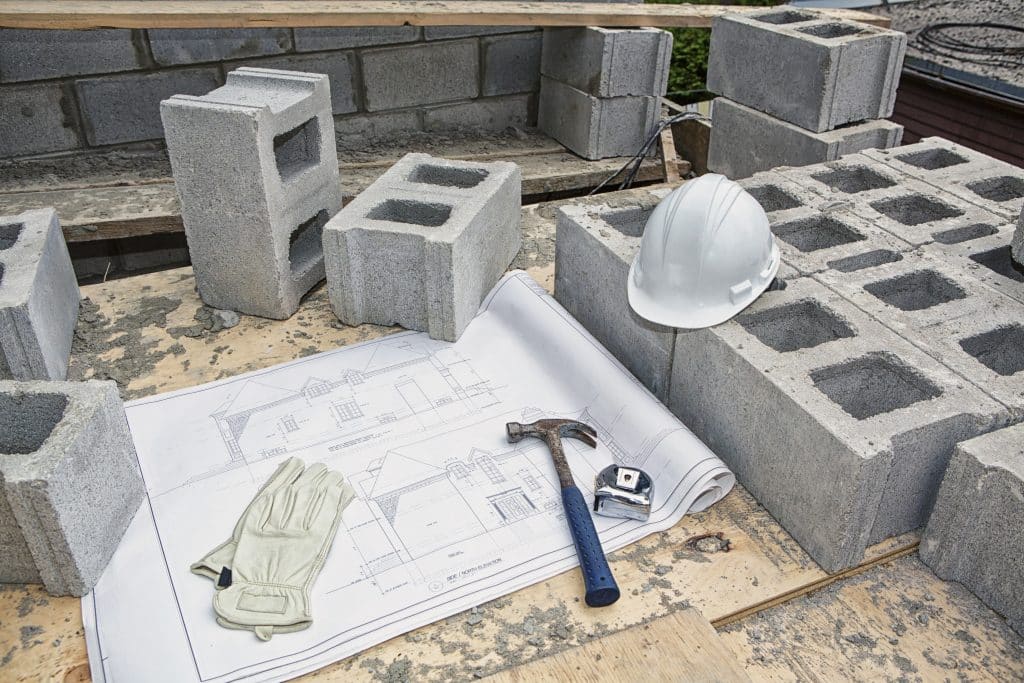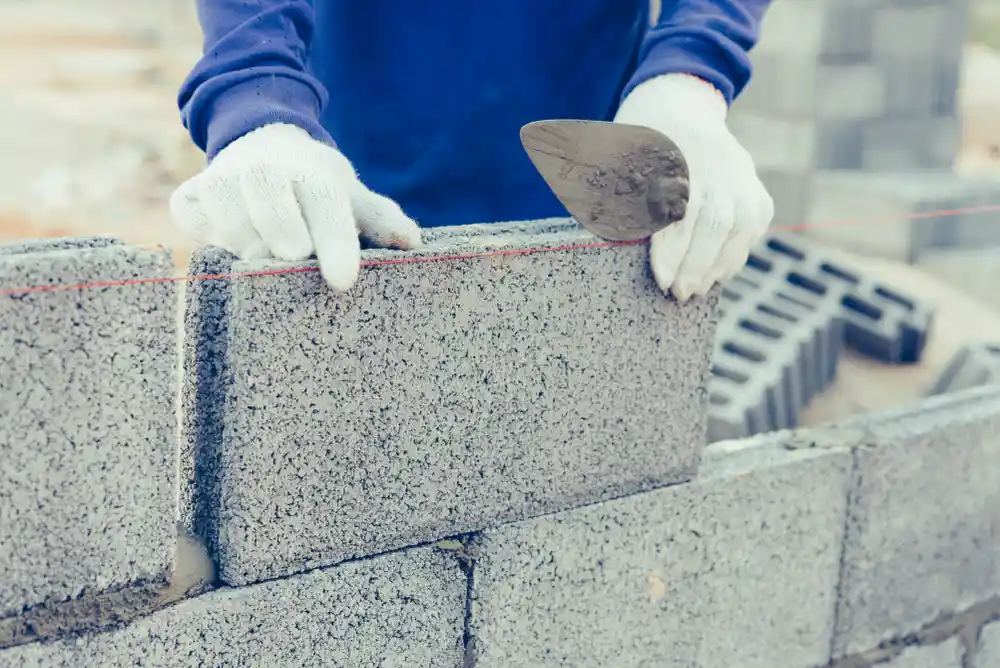Concrete Masonry Units (CMU) are common in the construction world because of their strength, durability, and flexibility. However, as with any other type of building material, CMU has both advantages and disadvantages, knowing which ones will help you make wiser choices in your next project.
The present blog examines the CMU pros and cons in practical terms. You might be building a school, a warehouse, or a custom home foundation, but to be successful in the long term, you need to know what CMU is in building, how it does, and where it might not be able to do it.
What Is CMU and Where Is It Commonly Used?
Let’s start with the basics: What is CMU block and why is it used so widely?
A CMU or Concrete Masonry Unit is basically a rectangular block of concrete, which is fabricated to be placed in load bearing or non load bearing wall constructions. The hollow concrete block is most common, solid ones are specialized. CMU meaning in construction does not only imply a block itself, but a whole system of wall construction that consists of grouting, reinforcement, and finishing.
Here’s a simple CMU wall definition:
A CMU wall is a structure composed of stacked concrete blocks, often reinforced with steel bars and filled with grout for structural strength.
These blocks are often used in:
- Structural walls for commercial buildings and schools
- Fire-rated assemblies
- Basement walls and retaining walls
- Partition and demising walls
- Security fences and industrial facilities
In construction drawings, you might also encounter a CMU block wall section that shows you how to lay, reinforce and finish the block—frequently with insulation, rebar, grout cells and waterproofing membranes.
CMUs are prized for their longevity and durability, but as we’ll explore next, they also come with some trade-offs.

Pros of CMU Construction
The benefits of using the CMU are numerous, and that is where one has to start when attempting to understand the CMU pros and cons of using this material. Here are the fundamental advantages of CMU walls:
1. Exceptional Durability
CMUs are made using cement, aggregates, and water; thus, they are extremely robust and dense to shock. That makes them perfect at places that have a high explosion of traffic and abuse systems, such as schools, warehouses, and storm shelters.
2. Fire Resistance
CMU walls are incombustible and provide great fire ratings. CMU assemblies are commonly required in building codes as firewalls, within stairwells, and in multi-family building units.
3. Pest and Mold Resistance
CMU, unlike wood framing, does not sustain termites, rodents, or mould as food. This is smart in wet or insect-infested areas.
4. Acoustic and Thermal Mass
The heavyweight of CMU is automatically good at sound-damping, so it is advisable to apply it on buildings to reduce unnecessary sound. It also functions as thermal mass, and it assists in regulating indoor temperatures.
5. Versatility in Design
CMU has numerous uses, and can take a split-face finish, polished, or painted surfaces to make up structural walls or decorative applications. CMU is gaining popularity with modern architects in open interior walls as a way of achieving an industrial look.
6. Long-Term Cost Efficiency
CMU walls can be both lower in maintenance costs over time and last longer than natural wood or light-gauge steel structures, but the initial cost might be higher.
7. Readily Available and Standardized
CMUs are standardized, and they can be found throughout North America. Construction planning is easy because they are all of the same size and weight. An 8x8x16-inch standard CMU block weighs between 30 and 40 pounds, so the concrete masonry unit is portable by small crews and has a large load volume.

Cons of CMU Construction
While CMU has many advantages, it’s important to recognize the limitations as well. Exploring both sides of the CMU cons gives you a clearer picture of when and where to use it effectively.
1. Aesthetic Limitations Without Finishing
The raw look of untreated CMU is one of the frequent disadvantages of this building material. The bare gray blocks can be ugly in the extreme without such things as paint, stucco, or veneer-especially in housing. Though it may offer an alternative, such as split-face texts, they may increase cost.
2. Labor-Intensive Installation
In comparison to panelized construction or wood framing, CMU takes more labor. It entails block-by-block installation, mortar connections and reinforcement, and also grout filling. This has the effect of increasing the time required in construction and increasing labor costs.
3. Weight and Transportation Challenges
CMU block weightage is also considerable-between 30 and 40 pounds of standard unit. This increases the physical labour of handling and transportation, and installation, which is especially so when it is applied to multi-story buildings where lightweight materials are preferred.
4. Insulation Limitations
CMU alone has a very low R-value. It needs to be combined with stiff foam boards, furring, or interiors stuffed with insulation in climates where insulation needs are high to pass code. This adds complexity and may decrease the volume of interior usable space.
5. Potential for Moisture Absorption
CMU is porous in itself. Failure to seal up or waterproof it may allow in moisture, which can cause interior dampness or efflorescence. This is especially when one is undertaking the design of other basements or retaining walls.
When comparing CMU pros and cons, these disadvantages don’t disqualify the material, but they highlight the importance of proper design, finishing, and construction detailing.
CMU vs. Other Building Materials
Understanding how CMU stacks up against other common materials will help clarify whether it’s the right fit for your project.
| Feature | CMU | Brick | Wood Frame | Precast Panels |
| Durability | High | High | Moderate | High |
| Fire Resistance | Excellent | Excellent | Poor | Excellent |
| Insulation (R-value) | Low | Moderate | High | Moderate |
| Labor Cost | High | High | Low | Moderate |
| Speed of Installation | Moderate | Slow | Fast | Fast |
| Material Weight | Heavy (CMU block weight: 30–40 lbs) | Heavy | Light | Very Heavy |
| Design Flexibility | Moderate | High | High | Low–Moderate |
When reviewing this comparison, it’s helpful to revisit the CMU wall definition: a high-mass, non-combustible masonry unit used primarily for structural walls. Compared to wood, which is lightweight and flammable, or precast panels, which are quicker but require cranes, CMU offers a balanced solution, especially in load-bearing, high-performance environments.
Conclusion
Considering both the CMU pros and cons, it’s clear that this material plays a vital role in construction projects across Hauppauge and Suffolk County, NY. Known for its exceptional durability, fire resistance, and low maintenance needs, CMU is a dependable choice for builders and property owners who want structures that stand the test of time. If you’re planning a construction project in the area and need expert guidance on whether CMU is right for your build, the team at Strand Consulting—located at 490 Wheeler Rd, Suite 108, Hauppauge, NY 11788—can help you make the right choice. With years of experience serving local residential and commercial clients, we can evaluate your project needs and recommend the best materials for lasting results. Call us at (631) 805-3179 or visit our website to learn how CMU, when applied properly, can provide a solid structural base—both literally and figuratively—for safe, strong, and durable construction in our local communities.
FAQs
1. What are the disadvantages of concrete masonry units?
Concrete masonry units (CMUs) are heavy and labor-intensive to put in place, and they also need insulation to conform to the energy codes. They must also be well waterproofed to avoid water problems. There may be aesthetic restrictions that need further finishing, such as paint or stucco, to enhance aesthetic beauty in construction projects.
2. What are the disadvantages of concrete walls?
Cast-in-place concrete or CMU walls can be very expensive to erect, and even time-consuming. Natural walls are heavy and restrict building the upper stories, and do not insulate well, unless additional layers are used. It is also subject to cracking due to shrinkage or settlement when there is a lack of proper jointing.
3. What are the advantages of concrete masonry units over other types of masonry units?
CMUs are stronger in their structure, resistance to fire, and durability above clay bricks and lightweight blocks. They are bigger, which saves time on installation, and they can be beefed up. CMUs also readily exist and are affordable to do large-scale or load-bearing constructions.
4. What are the advantages and disadvantages of masonry?
Advantages: High strength, durability, fire resistance, and low maintenance.
Disadvantages: Labor-intensive, heavy, susceptible to seismic forces without reinforcement, and needs skilled labor. Masonry can also be less energy-efficient unless properly insulated.
5. Is a CMU wall better than a concrete wall?
It depends on the project. CMU walls are modular, easier to repair, and cost-effective for vertical construction. Solid concrete walls (cast-in-place) offer better monolithic strength and airtightness. CMU is preferred for flexibility and fire-rated partitions; solid concrete excels in foundation and high-load areas.
6. What is the strength of Concrete Masonry Unit?
Standard CMUs typically have a compressive strength of 1,900 to 2,500 psi, depending on the type and mix. Structural CMUs can be manufactured to meet higher strengths, especially when reinforced and grouted.
7. What is the fire rating of a CMU wall?
A typical 8-inch thick CMU wall can provide a 2-hour to 4-hour fire rating, depending on unit density, construction method, and whether it’s filled or unfilled. Heavier units generally offer better fire performance.





